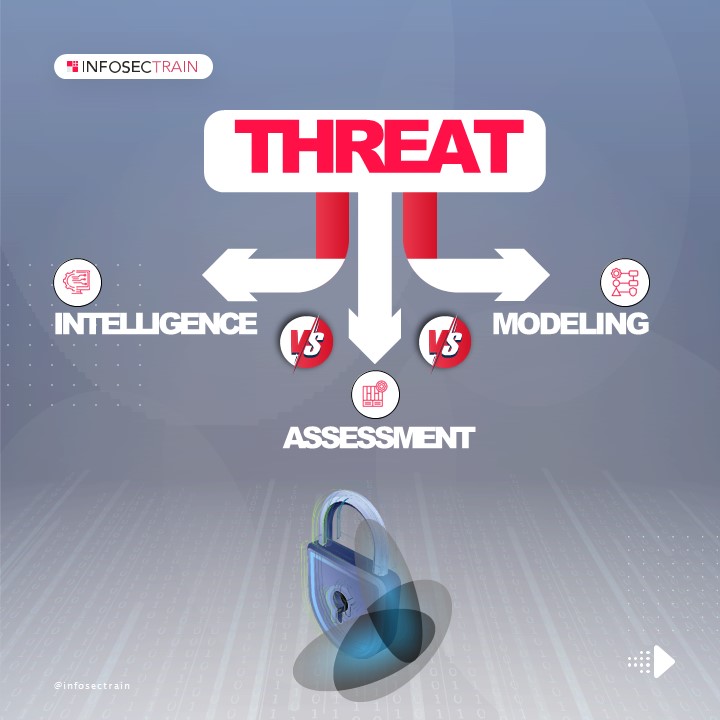Threat Intelligence vs. Threat Assessment vs. Threat Modelling - PowerPoint PPT Presentation
Title:
Threat Intelligence vs. Threat Assessment vs. Threat Modelling
Description:
This PDF compares and contrasts Threat Intelligence, Threat Assessment, and Threat Modelling. Understand the distinctions between these essential components of cybersecurity. Explore their roles in identifying and mitigating risks, and learn how to effectively integrate these practices into your organization's security strategy for a comprehensive threat management approach. – PowerPoint PPT presentation
Number of Views:1
Date added: 3 November 2023
Slides: 10
Provided by:
infosectrain01
Category:
How To, Education & Training
Tags:
Title: Threat Intelligence vs. Threat Assessment vs. Threat Modelling
1
THREAT
INTELLIGENCE
MODELING
ASSESSMENT
2
FOCUS
Threat Intelligence
Gather and analyze current and emerging threats
within an organization
Threat Assessment
Analyze, evaluate, and prioritize potential risks
and vulnerabilities within an organization
Threat Modeling
Proactively identify, analyze, and mitigate
risks during system design or development
3
PURPOSE
Threat Intelligence
Enhance cybersecurity posture by understanding
adversaries' TTPs
Threat Assessment
Prioritize resources to protect critical assets
from identified risks
Threat Modeling
Reduce vulnerabilities before implementa tion to
prevent successful attacks
4
SCOPE
Threat Intelligence
Broad scope, gathering data on existing threats
Threat Assessment
Broad scope, evaluating risks and vulnerabilities
Threat Modeling
Narrow scope, focusing on specific system designs
5
DATA SOURCES
Threat Intelligence
External threat data sources like threat feeds,
research, hacker forums, etc.
Threat Assessment
Internal and external data sources, past
incidents, security reports
Threat Modeling
Internal system design and architecture
6
FREQUENCY
Threat Intelligence
Continuous
Threat Assessment
Periodic - Conducted at specific intervals (e.g.,
quarterly or annually)
Threat Modeling
One-time or iterative
7
OUTPUT
Threat Intelligence
Actionable threat intelligence reports and IOCs
(Indicators of Compromise)
Threat Assessment
Risk assessment reports, and mitigation strategies
Threat Modeling
Threat model diagrams, risk mitigation
plans, and security control recommendations
8
BENEFITS
Threat Intelligence
Informed decision-making, early threat detection,
and response
Threat Assessment
Focused resource allocation, risk mitigation
strategies
Threat Modeling
Reduced security risks before deployment,
cost-effective solutions
9
FOUND THIS USEFUL?
To Get More Insights Through Our FREE
Courses Workshops eBooks ChecklisEs Mock
TesEs
LIKE
FOLLOW
SHARE































